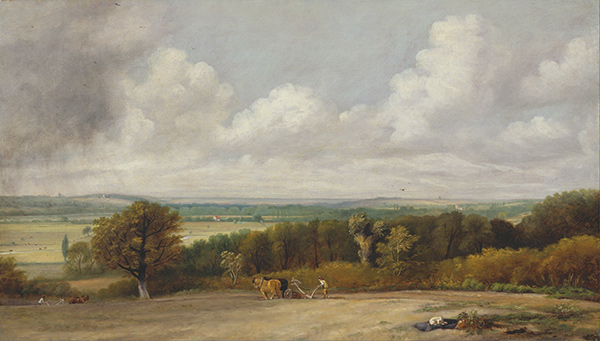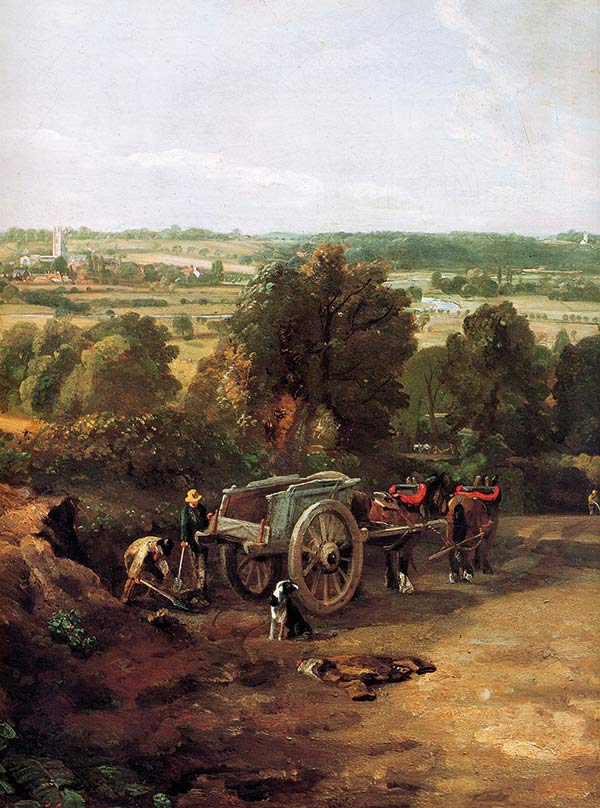Saving the Commons
Jack Bell at Plough

As the Industrial Revolution took off in Britain, William Cobbett rose in defense of the cottage economy
In 1822, a journalist and radical named William Cobbett began a series of journeys by horseback through the countryside of southern England. His aim, he declared, was “not to see inns and turn-pike roads, but to see the country; to see the farmers at home, and to see the labourers in the fields.” To travel by turnpike – on the expanding network of toll roads designed to facilitate the commerce of goods destined for London – meant, he said, that you would “know nothing of England.” Instead, by crossing fields, commons, or the narrow lanes used by farmers and workers, you could see the people of England “without any disguise or affectation.”
Often traveling alone, Cobbett sought the most obscure pathways he could find, frequently going miles out of his way to avoid the smooth, newly constructed turnpikes he loathed. From his wanderings emerged Rural Rides, a wide-ranging sketch of rural life at the dawn of the Industrial Revolution. Rural Rides is a classic of nineteenth-century social criticism, pioneering new forms of travel and landscape writing; it was beloved by thinkers as different as Karl Marx and G. K. Chesterton. In the twenty-first century, it’s largely forgotten outside academic circles. But Cobbett’s critiques of enclosure make Rural Rides seem anything but dated.
From the early Middle Ages, the rural laboring classes in England had raised crops and livestock for their own personal use, even when they were not owners of the land they used. Access to this land was protected in different ways, and none more significant than the so-called rights of the common. Customs varied from village to village, but the rights of the common granted peasants (and later, the rural laboring classes) access to land for very specific purposes: to graze animals like cattle, sheep, and pigs; to harvest wild food and timber; to make hay; to glean after harvest; or to grow crops in very small allotments. The land might belong to a noble family, but those who lived on or near it had rights that the landowners and farmers were not supposed to interfere with. In many cases, the land peasants used was considered “waste,” or land that wasn’t tillable or worth improving.

In the late eighteenth century, workers’ access to common resources came under attack. Numerous tracts of common and waste land were “enclosed” for tillage and grazing large flocks of sheep: rural families were forced off the land and their access to resources was severely curtailed. Modern agriculturalists like Arthur Young had promised landed English farmers increased capacity and higher yields through enclosure and monocropping. Following this cue, many landowners and farmers sought ways to absorb common and waste lands into their own agricultural holdings. Parliament assisted these efforts: from 1750 to 1850, it passed five thousand acts that restricted rural workers’ access to what had been common resources. London banks provided the loans necessary to clear the land of laborers and wildlife and grow crops; the new laws let owners do so. In some instances, the land was simply annexed without parliamentary consent. One estimate suggests that by the middle of the twentieth century, nearly one-fifth of England’s land mass had transitioned from common to private use.
For farmers and landowners, enclosure was often a financial windfall. For those who lived and worked on the land, enclosure was a catastrophe. Although there were multiple forces conspiring against rural workers, enclosure amounted to what the economic anthropologist Karl Polanyi called “a revolution of the rich against the poor.” Cobbett himself described it as a “shutting out of the labourers from all share in the land,” forbidding them to even “look at a wild animal, almost at a lark or a frog.” Enclosure was an ecological disaster too. Landowners who took possession of commons would tear down hedgerows, fill in ditches, drain ponds, and raze forests. With the natural biodiversity of the commons destroyed, farmers grew cash crops like wheat or barley on what remained. And enclosure imposed dire legal consequences on the hunting and foraging rural people had tacitly agreed upon for generations, destroying long-established customary arrangements of give-and-take that had supported the rural community.
Rural Rides documents the social consequences of enclosure and the centralization of agriculture. It tells us of workers’ habits of dress, the state of their farms, the condition of the cottages they lived in. It also describes how enormous damage to the natural world impoverished the people who depended upon it. Long before more recent calls to return to indigenous methods of agriculture and land stewardship, Cobbett perceived the significance of farming with nature rather than against it: hedge-laying, tree-planting, coppicing, and other aspects of mixed, small-scale agriculture. This longstanding cottage economy not only encouraged enclaves of wildness in a landscape dominated by increasingly centralized agricultural systems, it had long helped the rural poor avoid dependence on parish relief or the chance of having a benevolent landlord. Cobbett called for his country’s ruling classes to give back the common land they had stolen from their own people.

Cobbett was politically radical and theologically prescient. Rural Rides expresses the view of a world where the land is a common inheritance for all, not the property of a few. In an era where the systems of centralization and control Cobbett critiqued have led to an ecological crisis of existential proportions, we would do well to reconsider Rural Rides’s vehement critique of a system incapable of recognizing moral or environmental limits.



